A good TMS system is just like any other for companies that require mapped and managed transportation processes. Freight forwarders, carriers, and distributed distribution centers do their jobs with the necessary tools. The same applies to all industries. TMS can support the entire supply chain in keeping business moving in the right direction and on time.
From our experience, the best transportation management software is custom-built. For example, we made a shipping document management system for transportation and a trucking app for truck drivers. Our examples show that custom-built TMS software gives you freedom. You can also gain a competitive advantage by having more functionalities that your competitors don't have.
Gartner research shows that the transportation management system (TMS) has a diversified vendor landscape in the US and that the biggest providers of TMS are a small group of transportation and logistics service providers with revenues of $20M or more and growth of 15% or more. But this doesn't change the fact that there are countless numbers of companies that provide TMS to SMBs. They provide TMS that shift average transportation productivity with some about 5%-15% positive outcome.
This article tells you that this positive outcome might be much higher once you get a solution tailored to your business needs. It comes with a custom-built TMS system that is precisely for you.
How do you get the best TMS if you're SBM?
We know what kind of steps the procurement team needs to take to approve a new vendor. Enterprises already have processes in place and can define precisely what kind of features a TMS should include and many other details about it. Not only are solutions important, but also the health of the vendor company. We must ensure the vendor can provide support over the next few years.
These processes are clear for bigger adopters, but if you're in a small and medium-sized business group, you may get confused or uncertain about what is supposed to be done in a manner that will secure your business and protect ongoing operations.
For small and midsize companies, finding the best transportation management system (TMS) involves defining needs (e.g., cost reduction, efficiency gains), identifying core functions (routing, tracking, load planning), and considering budget and scalability requirements. Research vendors, request presentations, and compare options, carefully considering off-the-shelf and customized solutions. Priority should be given to ease of use, vendor support, and seamless integration with existing systems.
To choose the right TMS, you should first understand your business needs. So, to do this right, you must define your transportation challenges. Considering your business's complex landscape, you can better adjust where you have operations problems and consider whether they can be resolved with software.
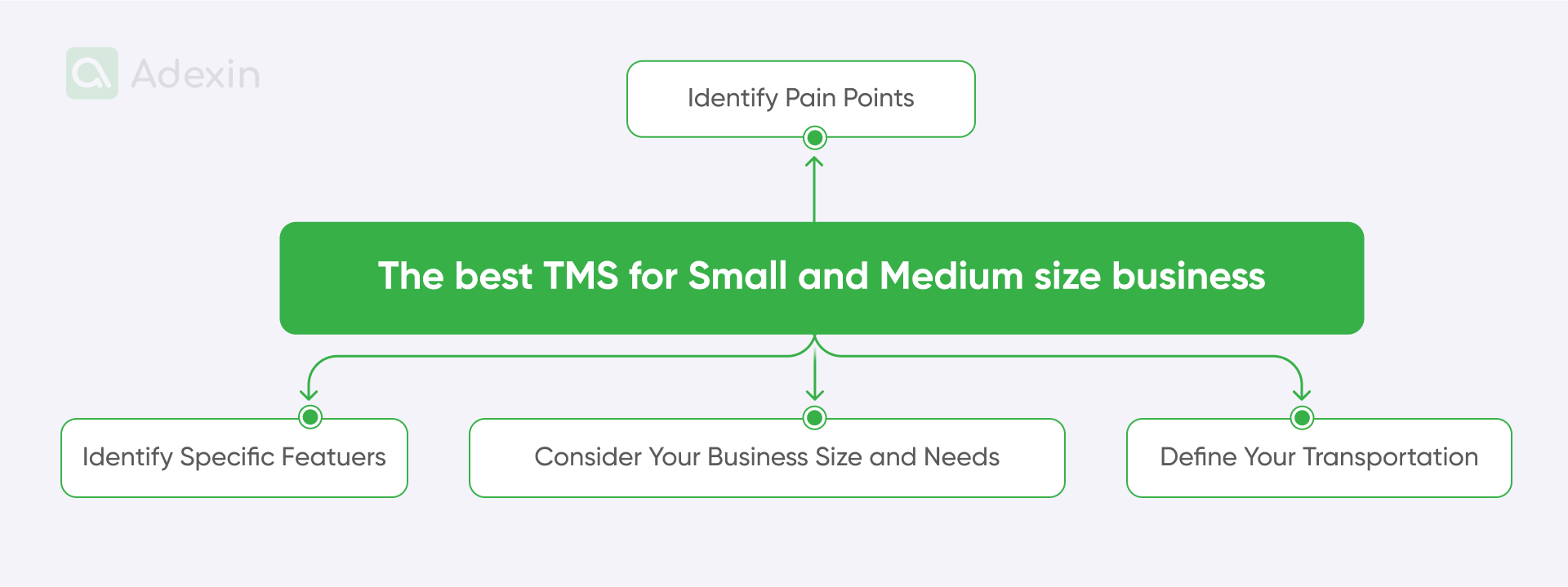
Identify pain points before choosing the best TMS
We summarized several pain points in transportation operations that many companies struggle with. So, having them in mind, you can better oversee where you can enable your business with new functionalities that cover your business-specific needs. Here are a few of them:
Inaccurate routing. You are experiencing delays, detours, or inefficient routes.
Poor visibility. You lack real-time tracking of shipments, leading to uncertainty and delays in customer communication.
High transportation costs. You are facing excessive fuel costs, detention fees, or empty miles.
Limited scalability. Your current system handles fluctuations in demand and business growth.
Compliance issues. You are struggling to comply with regulations (e.g., ELD mandates, Hazmat regulations).
Manual processes. You are relying heavily on manual data entry, spreadsheets, and phone calls, leading to errors and inefficiencies.
Poor communication. There are communication breakdowns between freight carriers, customers, and internal departments.
Define your transportation and logistics service providers' goals
To build a high-performing transportation network, we must first establish specific goals. It is a crucial step that guides our decision-making process. It ensures that all our efforts are aligned with your overall business strategy. Here are some top examples:
Cost reduction. Aim for lower transportation costs through optimized routes, reduced fuel consumption, and improved load utilization.
Increased efficiency. Streamline processes, minimize manual tasks, and improve operational efficiency.
Improved customer service. Enhance customer satisfaction through timely deliveries, proactive communication, and increased visibility.
Enhanced visibility. Gain real-time insights into shipment locations, ETAs, and potential disruptions.
Improved compliance. Ensure compliance with all relevant regulations and industry best practices.
Data-driven decision making. Leverage data and analytics to identify areas for improvement and make informed business decisions.
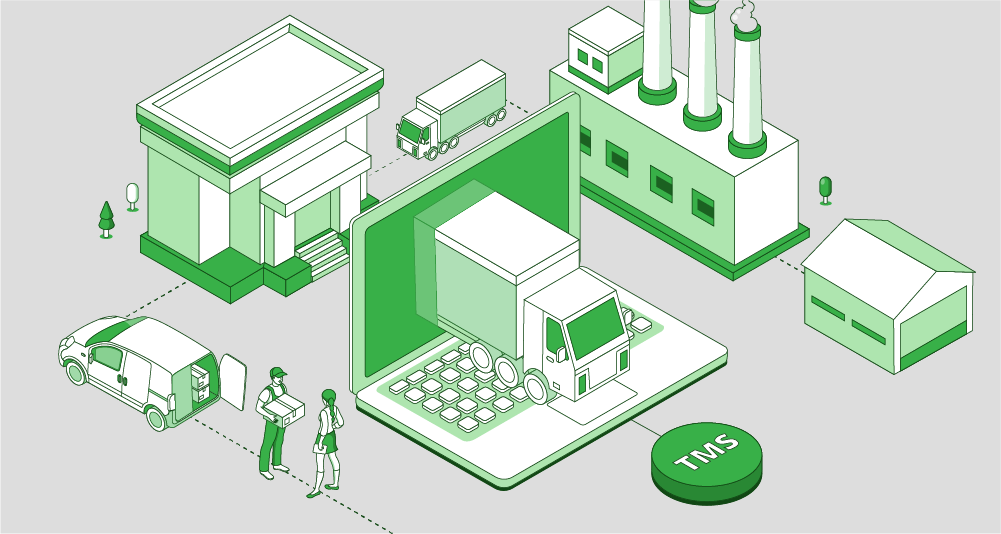
Identify specific features
To ensure you select the robust TMS solution, we need to identify the specific critical features for operations. It will help narrow down options and choose a system that maximizes efficiency and minimizes costs. Here are summarized examples:
Route optimization. Algorithms for finding the most efficient optimized routes considering factors like traffic, distance, and delivery windows. It also offers better freight management.
Freight tracking. Real-time visibility into shipment locations, ETAs (transit time), and potential delays.
Load planning & tendering. Tools for optimizing load consolidation, matching freight carriers, and managing carrier relationships.
Carrier management. Features for managing carrier contracts, fleet management, carrier communication, performance, and payments. It is very useful for internal fleet management and freight management. It helps get clear carrier information for better carrier selection.
Document management. Electronic document management for bills of lading, proof of delivery, and other transportation documents, such as carrier invoices, or support with freight brokers' documents. A transportation management system (TMS) solution offers robust capabilities for DMS systems and this is a very comprehensive TMS solution.
Yard management. Tools for yard operations, including truck scheduling and equipment tracking.
Integration capabilities. Seamless integration with systems like ERP, CRM, WMS, and telematics devices.
Reporting & analytics. Dashboards and reports for analyzing key performance indicators (KPIs), identifying trends, and improving performance.
Mobile app. A mobile app for drivers to access information, update shipment statuses, and communicate with dispatch.
Support for specific industries. Features tailored to specific industries like food and beverage, manufacturing, or retail.
Consider your business size and needs
Think at first about carefully considering your company's size and the complexity of your transportation operations. Consider if you want to scale to cope in the future with your specific business requirements. We mostly recommend a comprehensive TMS that is both effective and cost-efficient, but see more below what that means in terms of business size:
SMBs (small and medium-sized businesses). May benefit from cloud-based solutions, ease of use, and affordable pricing.
Enterprise businesses. May require more advanced features, scalability, and customization options.
Off-the-shelf solutions. This may be suitable for businesses with common transportation needs.
Custom solutions. This may be necessary for businesses with unique requirements or complex operations.
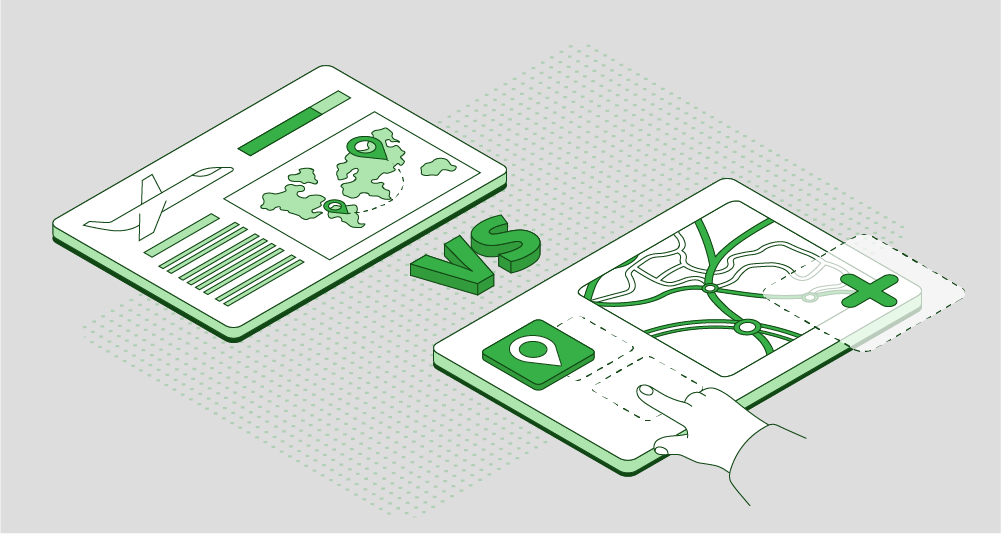
TMS system vendor identification
It is the point we want to refer to based on the research and experience conducted by one of the consulting companies in the US. JBF Consulting has stated that vendor proliferation is very important and can be done only once we assess our internal needs. We agreed with this outcome. Moreover, we exceed their knowledge about our direct experience working with companies from the transportation industry all over the US and Europe. So, the partnership guideline told us what vendor identification looks like, but here, we want to be more specific in the context of the TMS solution.
Here are a few tips in 8 key steps in the process of selecting a software development partner for the TMS system:
Understand your needs. Define your business objectives. Next, prepare short and long queries to articulate your needs and find the right partner.
Create a wide list. Gather 20+ potential candidates from various sources (recommendations, Google, Gartner, Clutch, GoodFirms, Quora, GitHub).
Get basic information. Evaluate online reputation, industry expertise, technical capabilities, and initial communication.
Shortlist candidates. Select 5-15 companies based on scoring and intuition.
Collect more info & interviews. Conduct in-depth interviews with shortlisted candidates.
Choose top candidates. Narrow down to 3-5 top options based on further evaluation.
Estimations & proposals. Send detailed project information to candidates and potential vendors. Review proposals and conduct further discussions.
Choose your partner. Select the best-fit partner and finalize the agreement.
Custom TMS software vs COTS
In the dynamic world of transportation, many companies face a critical decision: whether to use ready-made commercial off-the-shelf (COTS) software or invest in a customized solution. COTS software or standalone TMS offers an off-the-shelf, standardized approach with faster implementation and lower initial costs. Custom transportation management software (TMS), on the other hand, provides unparalleled flexibility. So, you can work with a company that already has ready-made software components that can be tailored to specific business needs. It offers greater long-term profitability and competitive advantage.
COTS TMS software
COTS is designed to address common challenges across a broad spectrum of businesses within the logistics industry. Its main features may include core functionalities like order management, inventory tracking, basic route planning, and some level of carrier management.
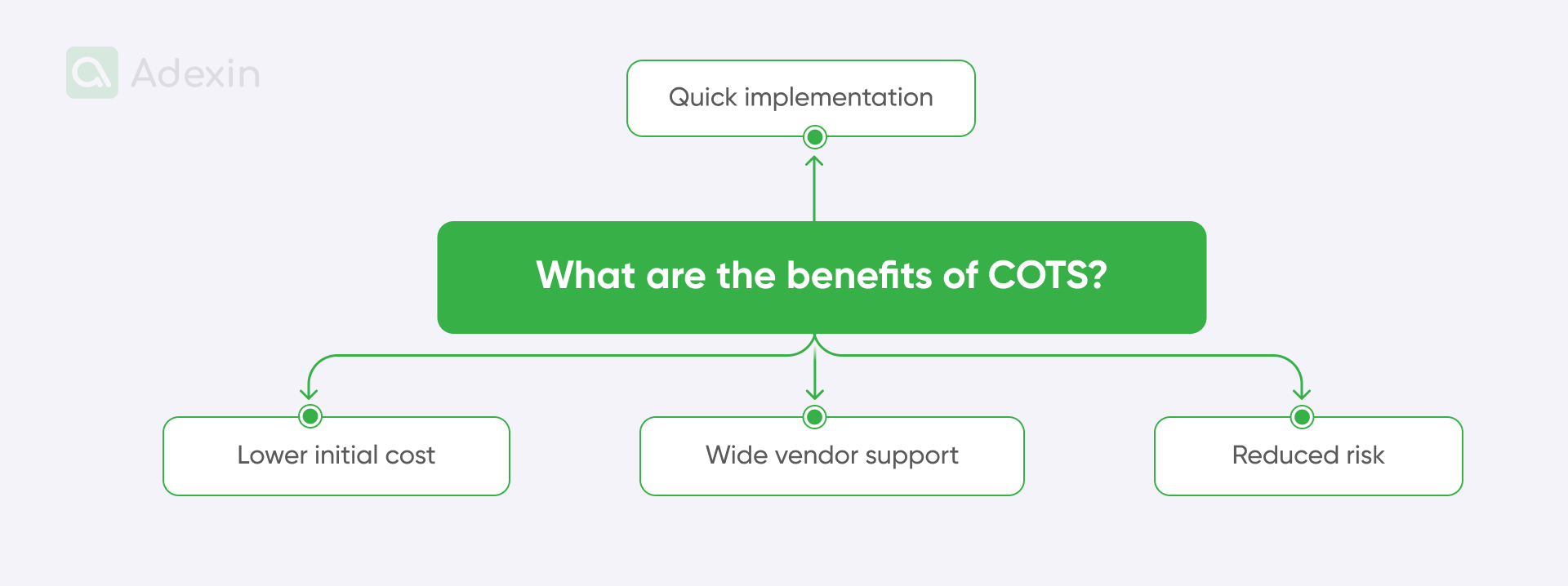
The main COTS TMS benefits:
Quick implementation. Relatively easy to set up and start using, often with minimal customization required.
Lower initial cost. Generally less expensive upfront compared to custom development.
Wide vendor support. Access to readily available documentation, tutorials, and customer support from the software provider.
Reduced risk. Proven track record with a wider user base, minimizing the risk of unforeseen issues.
Custom TMS software
A custom-made transportation management system (TMS) system is within our scope. At Adexin, we made tailored solutions, which were developed specifically to meet a particular transportation company's unique requirements and workflows. It offers freedom through scalability and flexibility and can be easily adapted and expanded to accommodate future growth, new technologies, and evolving business needs.
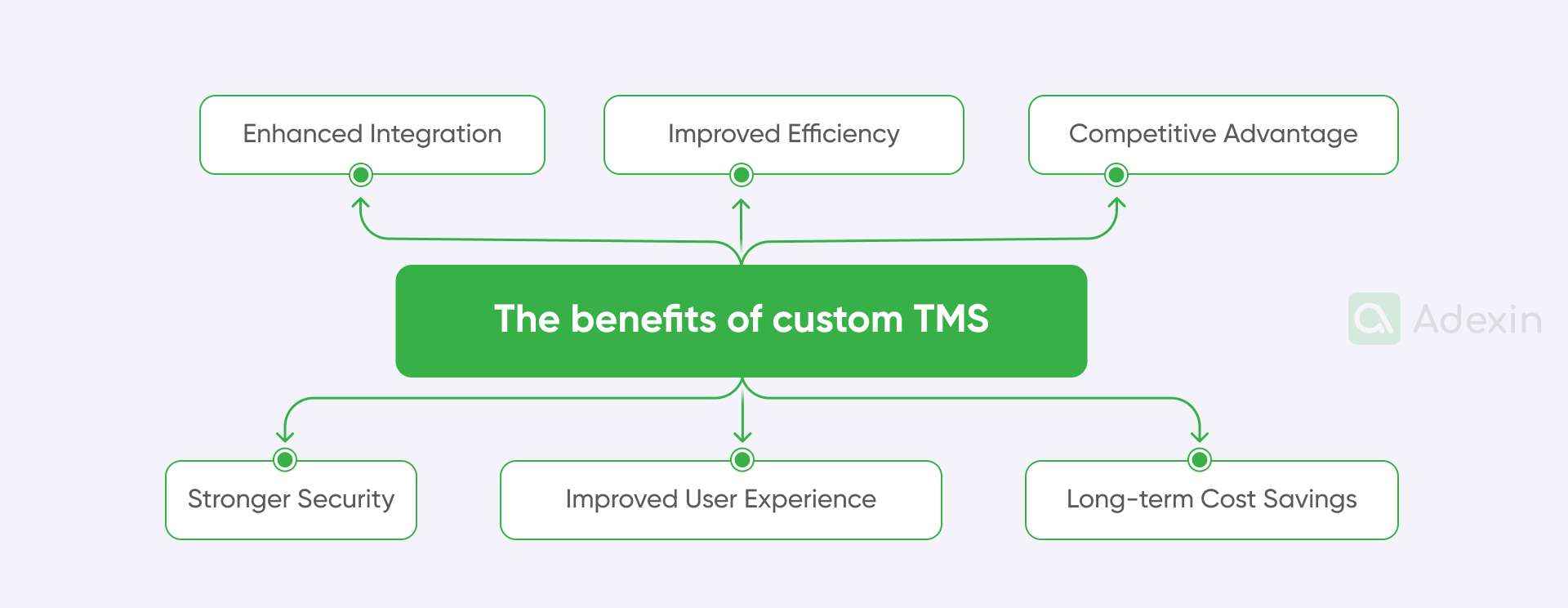
Here are the benefits of custom TMS:
Enhanced integration. Seamlessly integrates with existing systems (ERP, CRM, WMS) and other tools within the company's technology ecosystem.
Improved efficiency. Optimized for specific business processes, leading to increased efficiency, reduced errors, and improved productivity.
Competitive advantage. Provides a unique competitive advantage by enabling innovative solutions and differentiating the company from competitors.
Stronger security. Built-in security measures tailored to the specific needs and vulnerabilities of the company.
Improved user experience. Designed with the specific needs and preferences of the company's users in mind, resulting in greater user satisfaction and adoption.
Long-term cost savings. While the initial investment is higher, the long-term costs can be lower due to reduced reliance on third-party software licenses and increased efficiency gains.
Need help with transport management systems development?
We are happy to assist you
Explore moreFinale takeaway
A well-implemented transportation management software (TMS) is a tool that should be considered a strategic asset. By carefully assessing individual needs and choosing the right solution, we can gain competing advantages. Whether it's a COTS system or a custom-built one, companies can significantly improve efficiency, reduce costs, and enhance customer service.
We should keep in mind that there is a need for TMS solutions to prioritize user-friendliness, vendor support, and seamless integration with existing systems. While pre-built solutions offer convenience, a customized TMS may provide a greater competitive advantage by aligning perfectly with your unique requirements and operational workflows.
Discover how custom-built transportation management software (TMS) can unlock significant efficiency gains and give you a competitive edge. Contact Adexin today for a free consultation and discuss your unique transportation challenges. Our expert team will work closely with you to understand your unique needs and develop a tailored transportation solution that maximizes your ROI.

